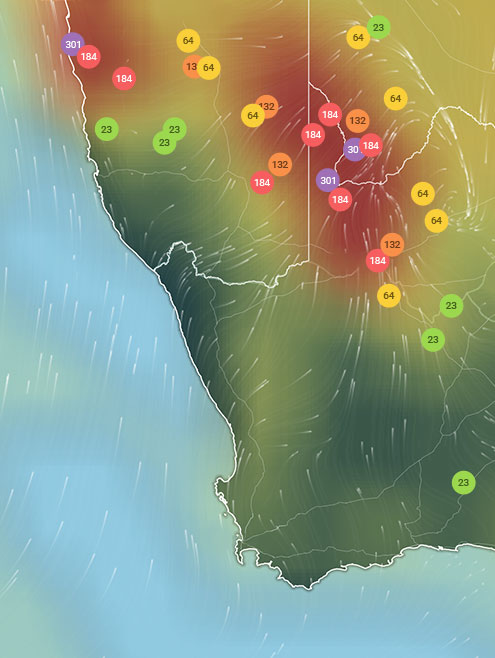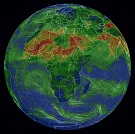모니터를 장착하여 소속 도시의 공기질 데이터에 공헌하세요.
337.2K 사람들이 이 도시을 팔로우합니다






공기질 데이터 기여자
기여자 및 데이터 소스에 관하여 좀 더 자세히 알아보세요| 날씨 | 구름 조금 |
| 온도 | 82.4°F |
| 습도 | 13% |
| 바람 | 6.9 mp/h |
| 기압 | 30 Hg |
| # | city | 미국 AQI |
|---|---|---|
| 1 | Santa Catarina, Nuevo Leon | 101 |
| 2 | 과달라하라, Jalisco | 90 |
| 3 | San Pedro Garza Garcia, Nuevo Leon | 89 |
| 4 | San Nicolas de los Garza, Nuevo Leon | 86 |
| 5 | General Escobedo, Nuevo Leon | 85 |
| 6 | 몬테레이, Nuevo Leon | 85 |
| 7 | Cadereyta Jimenez, Nuevo Leon | 78 |
| 8 | Celaya, Guanajuato | 78 |
| 9 | Irapuato, Guanajuato | 76 |
| 10 | Leon, Guanajuato | 74 |
(현지 시간)
전 세계 AQI 랭킹 보기
| # | station | 미국 AQI |
|---|---|---|
| 1 | Avenida Insurgentes Norte | 98 |
| 2 | Cerro de las Torres | 78 |
| 3 | Avenida Sur de Los | 60 |
| 4 | Avenida Sur de Los 100 Metros | 59 |
(현지 시간)
전 세계 AQI 랭킹 보기미국 AQI
60
실시간 AQI 지수
보통
| 일 | 오염 수준 | 날씨 | 온도 | 바람 |
|---|---|---|---|---|
| 토요일, 4월 13 | 보통 61 AQI 미국 | 86° 62.6° | ||
| 일요일, 4월 14 | 보통 72 AQI 미국 | 84.2° 64.4° | ||
| 월요일, 4월 15 | 보통 84 AQI 미국 | 86° 66.2° | ||
| 오늘 | 보통 60 AQI 미국 | 86° 66.2° | ||
| 수요일, 4월 17 | 보통 71 AQI 미국 | 86° 66.2° | ||
| 목요일, 4월 18 | 보통 81 AQI 미국 | 84.2° 66.2° | ||
| 금요일, 4월 19 | 보통 82 AQI 미국 | 80.6° 64.4° | ||
| 토요일, 4월 20 | 보통 72 AQI 미국 | 82.4° 66.2° | ||
| 일요일, 4월 21 | 보통 75 AQI 미국 | 82.4° 66.2° | ||
| 월요일, 4월 22 | 보통 77 AQI 미국 | 75.2° 64.4° |
시간 단위 일기 예보에 관심이 있으신가요? 앱 받기